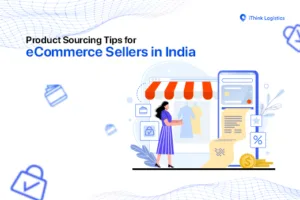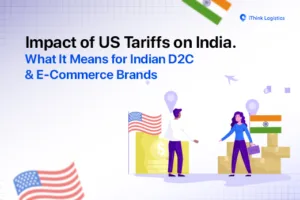Pay on delivery or Cash on Delivery (COD)?
Confused?
Yes, you read that right! These are two different things. As an e-commerce owner, what type of payment option should you keep?
Want to know? Then keep reading.
In this blog, we will talk about the pay on delivery payment option, the cash on delivery option, their advantages, disadvantages, and how you can implement these payment methods for your business.
So without further delay, let’s get started.
Overview: The Rise of Pay on Delivery and Cash on Delivery Products
Whether it’s the advantage of not having to make an immediate payment while buying something or the lack of enough trust for the buyer, the pay on delivery means convenience for customers. The pay on delivery concept in e-commerce has gained tremendous popularity among Indians in the past few years. The concept increased the percentage of people buying things online and contributed to the rise in popularity of eCommerce platforms offering cash on delivery products.
According to the survey conducted by the Confederation of Indian Industry, it has been seen that despite the low usage of the internet in certain parts of the country from 2010 to 2014, the e-commerce sector has tripled its turnover from 20,020 crores to 83,096 crores during this time.
It can be predicted that by 2021, the turnover might reach about 660,000 crores. There are many factors that make pay on delivery in e-commerce one of the most convenient and trustworthy modes of payment.
In many cases, a parcel is returned, rescheduled for delivery or marked as RTO as the customer doesn’t have the cash ready with them. This is where cash on delivery issues commonly arise.
In such cases, the pay on delivery meaning becomes clear, as the customer is able to pay via card, UPI, net banking, etc. This no cash on delivery approach really helps in reducing RTO and thus lowering overall logistics costs.
What is Pay on Delivery?
Pay on delivery (POD) is a broader term that includes any payment made at the time of delivery, not limited to cash. Pay on delivery means paying via cash, debit/credit card, UPI, or other digital methods when the product is delivered. When exploring pay on delivery meaning, it’s important to understand it encompasses all payment types made at the point of delivery.
What is Cash on Delivery?
What is cash on delivery? In cash on delivery e-commerce, customers order cash on delivery products online but do not need to make an immediate payment. Instead, they pay when the item is delivered. This pay on delivery meaning has gained popularity in e-commerce as it builds customer trust, particularly among first-time buyers. For companies, offering a cash on delivery option opens up the market to a broader audience, including those who may not have access to credit cards or online banking.
Advantages of Cash on Delivery
One of the primary advantages of cash on delivery is the trust it builds with customers, who may be skeptical of online transactions. The cash on delivery option minimizes the risk of fraud for buyers, as they only pay upon receiving the product. Additionally, the advantages of cash on delivery include reaching customers in areas where digital payment infrastructure is limited, making it an accessible payment method for a larger audience.
Also Read: How Cash on Delivery (COD) Works
Advantages and Disadvantages of Digital Payment vs. Cash on Delivery
When comparing advantages and disadvantages of digital payment options with cash on delivery, several factors come into play:
Advantages and Disadvantages of Digital Payment:
Advantages:
- Instant transaction processing
- No need for physical cash handling
- Detailed payment records
- Often comes with cashback or reward points
Disadvantages:
- Requires internet connectivity
- Some customers have security concerns
- Technical glitches can disrupt payments
- Not all customers are comfortable with digital methods
Understanding both cash on delivery and digital payment options helps businesses make informed decisions about what payment methods to offer.
Disadvantages of Cash on Delivery
Despite its benefits, there are some disadvantages of cash on delivery for both businesses and customers. For businesses, COD can increase logistical challenges and costs, as failed deliveries or returns can result in lost revenue and wasted resources. Another significant disadvantage of cash on delivery is cash handling, which can increase the risk of fraud or errors during transactions. Customers, on the other hand, may face additional wait times or even delivery delays due to the extra steps involved in processing cash payments.
Understanding what is cash on delivery and the pay on delivery meaning is important for businesses navigating the e-commerce landscape. While the advantages of cash on delivery can expand customer reach and build trust, businesses must also consider the disadvantages of cash on delivery and how it impacts logistics. As online shopping continues to grow, evaluating the role of cash on delivery products will help businesses provide diverse, convenient payment options to their customers.
Cash on Delivery Return Policy: What You Need to Know
A clear cash on delivery return policy is essential for both merchants and customers. When implementing a cash on delivery return policy, consider these factors:
- Time frame for returns (typically 7-30 days)
- Condition requirements for returned products
- Refund processing methods and timeline
- Documentation needed for returns
A well-defined cash on delivery return policy reduces confusion and builds customer confidence in your cash on delivery option.
Also Read: How To Minimize Cod Failures And Returns?
Who accepts pay on delivery?
As an e-commerce seller, it completely depends upon you whether you want to provide this facility or not. So in short, every e-commerce company can accept pay on delivery.
If you allow POD, the courier service company will automatically keep that provision for you and will take the payment from the customer via digital mode on your behalf. The pay on delivery meaning here extends to both cash and digital payment methods at the time of delivery.
Should you offer pay on delivery?
Whether you are a new business or an old one, there will be certain cash on delivery products that customers will always be skeptical of buying. So in that case you don’t want to lose the customer, you can offer them the pay on delivery option. This will help in building their trust and assurance.
Here’s how Cash On Delivery works and its benefits:
No cash dependency
As mentioned earlier, the customer doesn’t need to have the cash to receive the parcel with no cash on delivery options available. Other digital payment options are available for them. So you can stay assured that your product won’t be returned due to a lack of cash. And that is the advantage of cash on delivery option.
Great Marketing strategy
Giving out the option of pay on delivery provides a great competitive advantage for eCommerce sellers. This is a great marketing strategy and increases the chances of people buying cash on delivery products.
Building trust
Sellers giving out their products without taking up immediate payments are building their trust among potential customers. The pay on delivery system helps establish credibility.
Pay only when you receive
Pay on delivery means customers build trust with your business. This is applicable especially for new e-commerce businesses, which are still not established brands. The cash on delivery option in such cases helps in increasing credibility among customers.
The Security
One of the major advantages of cash on delivery is the maintenance of security. No financial information is given out and hence the customer can stay assured of being free of any kind of fraud. Cash on delivery issues staves off the tension of refund in case of non-delivery of the product. The customer can pay only after they get the product in hand. In that way, there is no risk of any kind of money loss. But many customers face cash on delivery problems due to miscommunication with the delivery person.
Also Read: How Cash on Delivery Dominates Indian E-commerce?
Don’t need to change
Paying in cash on delivery e-commerce often ends up with the delivery person saying that he doesn’t have change. In such a case, you can always grab the card and pay with no cash on delivery options. No hassle of change. No problem with payment.
Disadvantages of Pay on Delivery
Loss of Revenue to the Sellers
It may bring loss to the sellers in case a buyer returns a delivered item without paying. The customer might refuse the product or might be unavailable Which results in high revenue loss for the seller and increases harassment of the buyer. These are common cash on delivery issues that businesses face.
Extra Courier Charge
The online shopping portals generally deliver goods through the hands of a courier service. The couriers take their share of the charge with the selling price of the item that is being sold, so in Pay on Delivery, you end up paying more when compared to other payment modes. This is one of the disadvantages of cash on delivery that impacts pricing.
Minimum Transaction Value
Some online shopping portals also have a minimum transaction amount before a buyer can choose ‘Pay on Delivery’ mode. This means the buyer has to spend more money which can sometimes lead to customer loss. These cash on delivery problems can limit the effectiveness of offering cash on delivery products.
How to Manage Common Cash on Delivery Issues
Managing cash on delivery issues effectively can help businesses maximize the benefits while minimizing the drawbacks:
- Address verification: Verify customer addresses thoroughly to reduce failed delivery attempts
- Clear communication: Inform customers about delivery times to ensure availability
- Training delivery personnel: Properly train delivery staff to handle cash on delivery problems
- Digital alternatives: Offer no cash on delivery options like card payments at delivery
- Prepaid incentives: Provide discounts for prepaid orders to reduce dependency on cash on delivery
Addressing these common cash on delivery issues can significantly improve your operational efficiency.
Also Read: Common Mistakes to Avoid RTO in an Ecommerce In 2025
Frequently Asked Questions
1. What is the difference between pay on delivery and cash on delivery?
Pay on delivery is a broader term that includes any payment method used at the time of delivery, including digital payments, while cash on delivery specifically refers to paying with physical cash when the product is delivered. Understanding this pay on delivery meaning helps customers choose the right payment option.
2. Is cash on delivery safe for customers?
Yes, cash on delivery is generally safe for customers as they only pay after receiving their products. This eliminates the risk of paying for items that never arrive. However, customers should be aware of potential cash on delivery issues like delivery delays or product verification challenges.
3. What are the main advantages and disadvantages of digital payment compared to cash on delivery?
The main advantages and disadvantages of digital payment versus cash on delivery include convenience and instant processing for digital payments, while cash on delivery offers more security and trust for customers who prefer to inspect products before paying.
4. How can I avoid cash on delivery problems as a seller?
To avoid cash on delivery problems as a seller, verify customer details thoroughly, communicate delivery times clearly, train your delivery personnel well, and consider offering incentives for prepaid orders to reduce reliance on the cash on delivery option.
5. Can I return products purchased through cash on delivery?
Yes, you can return products purchased through cash on delivery, but you need to follow the seller’s cash on delivery return policy. Most e-commerce platforms have specific guidelines for returns of cash on delivery products.
6. Do all e-commerce websites offer pay on delivery?
Not all e-commerce websites offer pay on delivery. It depends on the business model and logistics capabilities of the platform. Many established e-commerce sites do offer this service to accommodate customer preferences for cash on delivery products.
7. Are there any additional fees for choosing cash on delivery?
Some e-commerce platforms charge extra for the cash on delivery option to cover the additional handling and processing costs. These fees are usually mentioned during checkout and represent one of the disadvantages of cash on delivery for customers.
8. What happens if I’m not available during cash on delivery?
If you’re not available during a cash on delivery attempt, the courier typically reschedules the delivery or returns the package to the seller after a certain number of attempts. This is one of the common cash on delivery issues that can affect both customers and sellers.
Conclusion
If you are setting up a new online shopping portal without a large number of reviews or branding, you might want to add the cash on delivery option. It will offer a sense of credibility to your buyers. As said earlier, pay on delivery offers a sense of security and flexibility to the buyers. If you want to give a seamless shopping experience for your customers, you can offer this method.
However, with its share of virtues and vices, pay on delivery is a flexible system and can attract more customers than you can think. It is a comfortable payment method for online buyers. It guarantees increased revenue to the sellers and full privacy of payment to the buyers, despite some cash on delivery problems that may arise.
Understanding the advantages and disadvantages of digital payment options versus cash on delivery helps businesses make informed decisions about what payment methods to offer. By carefully weighing the advantages of cash on delivery against the disadvantages of cash on delivery, e-commerce businesses can create a payment strategy that meets customer needs while supporting business growth.











